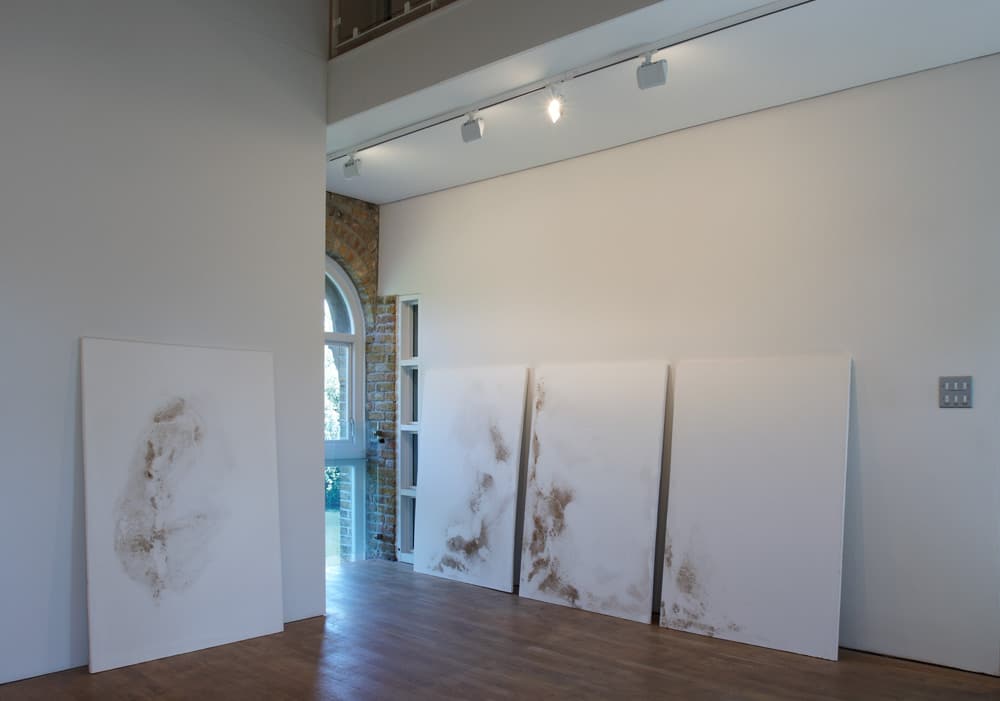











The Pump House Gallery
2011
Somewhere, Nowhere centres around ideas of time, memory and materiality. The focus is on a transitory, ephemeral and corporeal beauty, evoking notions of time passing, memories fading, absence and loss. Materials such as blood, bone and ash become pigments that stain the floor and mark the walls; traces of life simultaneously anonymous and intimate.
Evoking the idea of a home and its history, Somewhere, Nowhere uses the house as a metaphor for humanness. It speaks of peeling wallpapers, stained carpets, of life’s general wear and tear and the fragility and vulnerability of human life.
Many of the substances Carey works with have strong associations with the body. Their presentation evidences a concern with how the human presence leaves a mark on its environment, and the etching of memories into the mind. The use of everyday detritus such as newspaper, coffee and cigarette ash sees the artist exploring the corporeal through the domestic.
By stripping back some of the theatrical elements of her practice and amplifying the formal qualities of the materials Somewhere, Nowhere offers a more restrained and poetic expression. Her piece Untitled (Blood Dust) carpets the first floor of the gallery in a simple but intense red rectangle of dried blood. The use of blood – which has been dried and ground before being spread on the floor – makes for a meditation on the body; here being laid bare the actual stuff of life. Its visual seductiveness is at odds with the potentially repellent visceral associations of the material.
Carey frequently uses lowly or bodily substances, endeavouring to transform them into something that can offer beauty yet still convey some of the reality and ugliness of life. The melancholic and fleeting beauty of Carey’s work speaks eloquently of the transitory nature of life. Stains fade, dust scatters and despite the delicacy of their construction, Carey’s materials are undeniably still remains; unstable and ephemeral; much like memory, a central theme in the exhibition, which can be both fleeting yet enduring.
In Untitled (Without End) sections of the ground floor gallery walls are washed with cigarette ash and intricate stencils create a repetitive wallpaper motif. Marking the walls directly, the details of nuanced colour and texture create an atmosphere of absence; a mood of ghostly transference.
This atmosphere is perhaps most evident on the second floor, with the presentation of the new series of work Somewhere, Nowhere. Multiple plaster slabs lean against the walls of the gallery like architectural salvage. These are monuments reduced to their essence; stripped bare, unspecific and anonymous. Their surfaces appear mottled by decay but are in fact marked by cigarette ash and coffee. Closer inspection reveals subtle but intricate detailing such as the trace of lacework. These subtleties, while discrete, are absorbing to the viewer, pulling them into an almost forensic investigation of the traces left and the presences they infer.